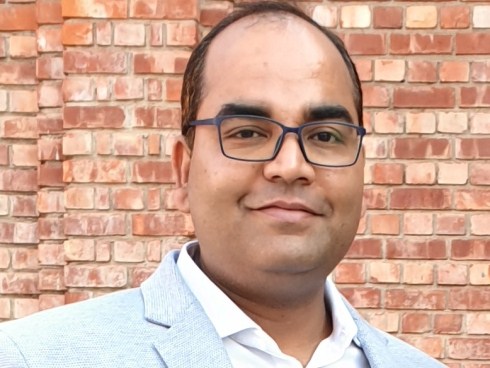
AIIMS researchers identify regulatory B cells (Bregs) that can tackle osteoporosis.
Researchers from the Department of Biotechnology, AIIMS-New Delhi had recently discovered the role of regulatory B cells (Bregs) that can prevent osteoporosis by reducing the ability of bone-degrading osteoclasts cells, a key finding which remained unknown so far was published in the reputed International Journal “Frontiers in Immunology” in 2021.
Dr Rupesh K. Srivastava, Professor (Associate) in the Department of Biotechnology, All India Institute of Medical Science (AIIMS), New Delhi, who is the lead researcher of the study, said that the reduction in the presence/number of Bregs increases the function of osteoclast cells and thus results in more bone loss in osteoporosis.
“If the quantity of regulatory B cells increases, which inhibits osteoclast cells, we can manage osteoporosis. We have already established this proof of concept in the lab and preclinical mice model, that if we can modulate regulatory B cells and increase their numbers and functions, we can prevent osteoporosis,” Dr Srivastava stated.
The researchers pointed out that reduction in the number and function of Bregs within the osteoporotic mice model and patients suffering from osteoporosis increase the functional performance of osteoclasts that further resorbs the bone via releasing acids (HCl) and enzymes (tartrate resistance acid phosphatase-TRAP). Regulatory B cells suppress the osteoclasts formation was first observed in the laboratory conditions.
When researchers cultivated regulatory B cells alongside osteoclasts, they found that osteoclasts were not formed properly, but when the regulatory B cells were removed, osteoclasts were formed. My team at AIIMS, further discovered that by secreting IL-10 cytokine, Bregs prevents both the formation and functions of osteoclasts and thus inhibits bone degradation and bone loss.
Dr Srivastava stated that osteoporosis is a “silent killer” because it usually remains undetected unless someone suffers from a bone fracture and by that time the damage to the bone becomes largely irreversible. Pointing out that around 25% of patients who get admitted to the hospital for fractures die due to osteoporosis-related complications.
He said that this mortality rate is quite high, as, "Those who recover will continue to suffer and need lifelong medications and support to go about with their daily routine activities”.
Normally, the patients would be unable to do anything that puts stress on their bones, which in turn affects their ability to engage in meaningful economic activities.
According to available data (in the USA), the annual economic burden of osteoporosis amounts to a whopping 150 billion dollars.
Dr Srivastava said "Every sixth/seventh person with osteoporosis globally will be an Indian since India is going to be the most populous country soon."
"Even today we have the highest number of people getting affected by this condition. Moreover, after twenty-thirty years, when the average Indian will be in his/her 60-70 years we as a country would be highly affected by osteoporosis. As we have the most aged women population, we will face a major economic burden due to osteoporosis," he added.
He also stated that earlier people used to think that osteoporosis occurs mainly in women due to the loss of estrogen triggered by menopause after 45 and 50 years of age or as an ageing-related problem in males.
He further added that "Around seven to eight years ago, no one was linking osteoporosis with the immune system”.
"The immune system is a very important component of our body which protects us from various infectious diseases and day-to-day injuries. We for the first time in the world defined the pivotal role of the immune system in osteoporosis and thus coined and started a new field named “Immunoporosis” dedicated exclusively to studying the role of the immune system in osteoporosis, Dr Srivastava elaborated.
Dr Srivastava said, "Our lab working at the forefront in deciphering the role of immune system in osteoporosis for last 10 years. We are working in the direction to reveal that osteoporosis is also an auto-immune disease where body’s immune system attacks own body and leads to more bone loss. Our findings thus would lead towards future employment of Bregs-based cellular therapy in ameliorating inflammatory bone loss observed in osteoporosis."
“Currently, we are undertaking further research on ways to modulate regulatory B cells via various natural components and probiotics, and our studies are showing good results,” he added. Our team working at AIIMS showed that probiotics (living microbes) modulate the immune system specifically Bregs and Th17 cells and prevent osteoporosis in mice. Soon our team will start a clinical trial of probiotics for the treatment of osteoporotic patients in a ICMR-funded project.